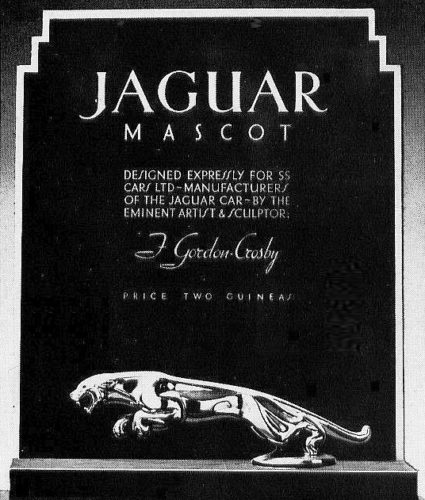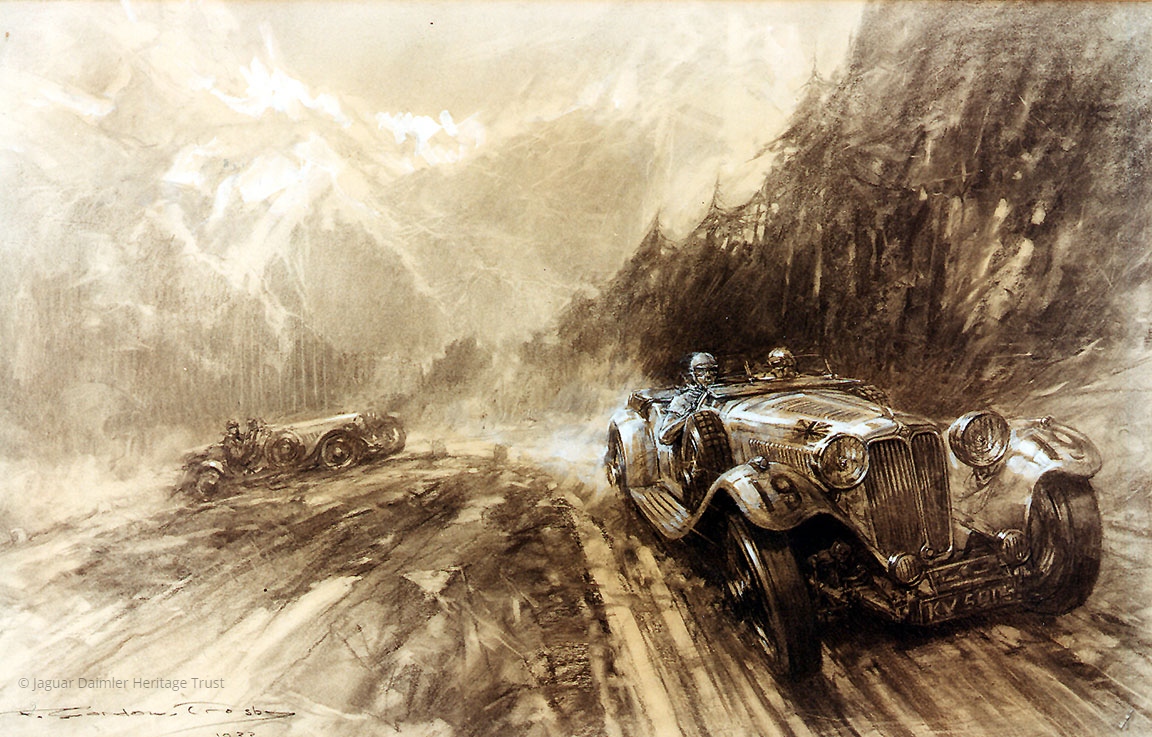
Alpine Rally, Gordon Crosby, 1933
The Artwork
This painting is one of two in the Jaguar Daimler Heritage Trust’s collection by English automotive artist Frederick Gordon Crosby.
Painted in mixed media, it depicts one of the three, 2½ litre, SS 1 Tourers entered by the Swallow company as their first ever ‘Works’ team, for the 1933 International Alpine Trial in September.
The Swallow Company lent the three cars to the drivers: Miss Margaret Allan; Charles Needham driving car 19 in this painting; and Humphrey Symons. The drivers had to pay all their own expenses. The cars were painted red, white and blue, with Needham piloting the white one. A fourth SS 1 was entered privately by the Austrian SS Distributor, Georg Hans Koch.
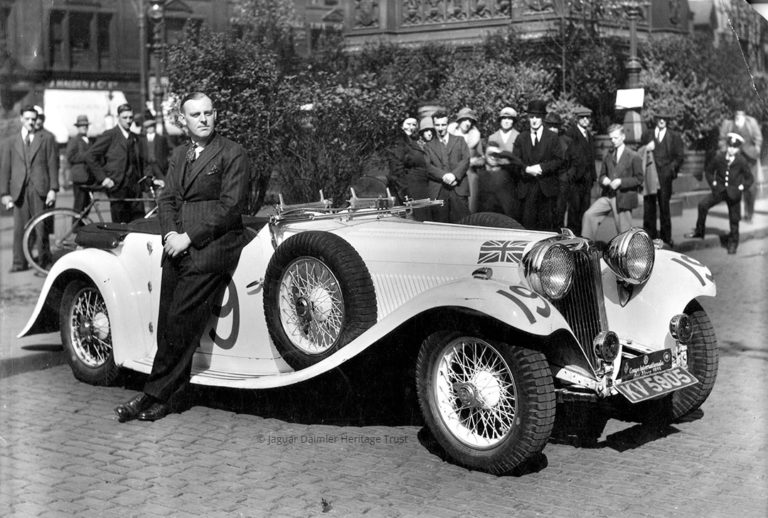
The cars of Allan and Symons succumbed to head gasket failure and Needham was the only one of the three Works cars to complete the Rally, accumulating 54 penalty points on the way and coming 8th overall. Koch in his ‘private’ entry finished 5th in class in the Glacier Cup and 14th overall.
The style of the painting is typical of Crosby. It combines a high degree of technical accuracy while capturing the scenery and exhibiting a very vivid sense of drama and movement.
The painting is on display at the Collections Centre at the British Motor Museum.
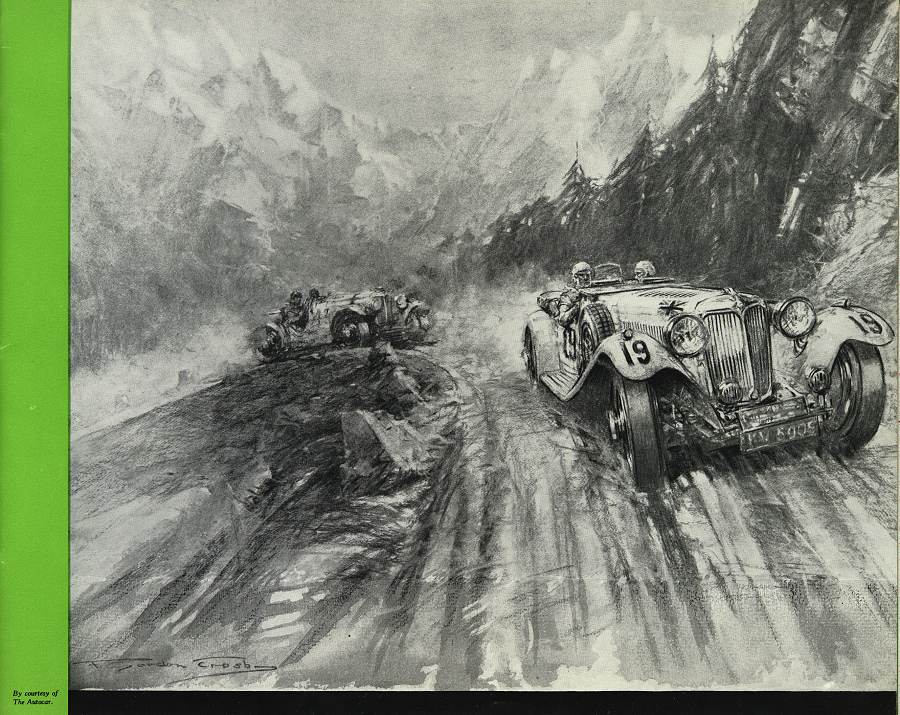
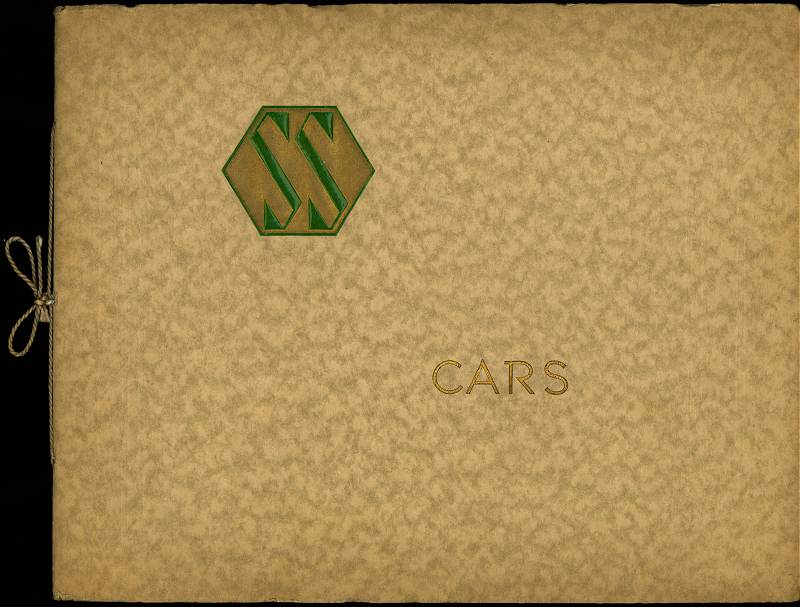
The painting was used by SS Cars Ltd as the frontispiece of the 1934 brochure for their whole range of cars.
As well as describing the full range of Coupé, Saloon and Open Sports cars the brochure majored on ‘Recent Achievements’ in: The Alpine Trial (pictured); Scottish Rally; Scarborough Trial and Rally; Eastbourne Concourse D’Elegance; Shelsley Walsh Hill Climb; Isle of Man TT Trials; The Alps and the Continental Concourse D’Elegance.
The Artist
Frederick Gordon Crosby, born in 1885, was an English automotive illustrator who worked for the magazine Autocar for most of his life. After the start of his professional career, he attended life classes at art school but aside from that, he had no formal training as an artist.
He started his career as a draughtsman in The Daimler Motor Company’s drawing office in 1908 and that same year, at the age of 23, he moved to Autocar where one of his first jobs was to create a perspective drawing of the BTH magneto. What he produced would later be termed an ‘exploded view’.
He is well known for his coverage of many of the great car races of the day, including Le Mans and the Monte Carlo Rally as well as the Alpine Rally.
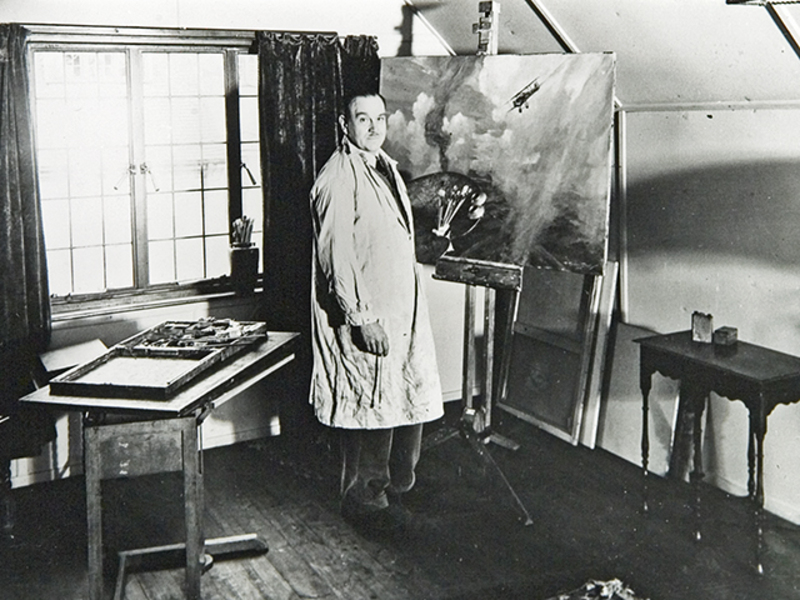
(source: unknown)
He best loved to illustrate the big, pre-World War One racing cars, which feature prominently in much of his work and his touring scenes reflect the atmosphere of the time. He made the transition from illustrator to artist and his creative and artistic ability raised his renderings of historic events into works of art while still retaining a high degree of technical accuracy.
Many of his paintings were produced in gouache and oil paint, but most of his oil paintings are confined to works about wartime (WWI) aircraft.
He exhibited at the Royal Academy three times, the first in 1916. Many of his paintings were featured on the front cover of Autocar but these were generally produced quickly in charcoal or crayon over a weekend so that they were ready for the Friday issue. For a long time Autocar held the originals in their archive although over the years many have been dispersed through a number of auction sales. A large collection of his work is displayed at the first floor of the Louwman Museum in The Hague and from time to time both original works and prints still appear at auction.
In 1943 Crosby’s eldest son, Peter, died in an aerial battle and unable to cope with this loss, Frederick Gordon Crosby committed suicide in August that year, aged just 58.
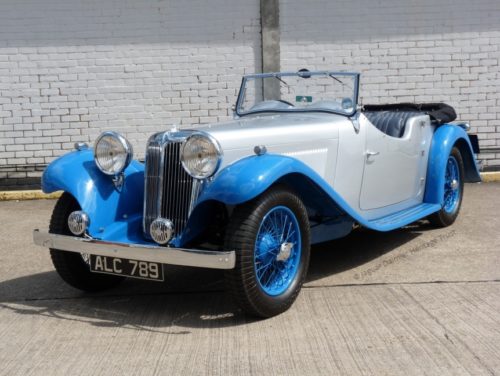
The Car
The JDHT does not have Needham’s car in our Collection but we do have a 1933 SS 1 Tourer of similar specification, albeit with a 16 hp engine rather than the 20 hp engine he campaigned in the 1933 Rally.
Click the button for more information on ALC 789:
Additional Information
Crosby also worked as a sculptor producing plaques, medallions and sculptures. He is renowned in Jaguar circles for producing the first official Jaguar ‘Leaper’ mascot.
William Lyons had seen a Jaguar car with a Desmo “Jaguar” mascot mounted on its radiator cap. He took an instant dislike to this describing it as ‘like a cat shot off a fence’. The Desmo design was never sanctioned by the factory and Lyons commissioned Crosby to design an item that better suited his cars.
This was offered to the public from 1938 and stayed in production until 1951. Since then it has been subtly changed a number of times evolving into the current version.
